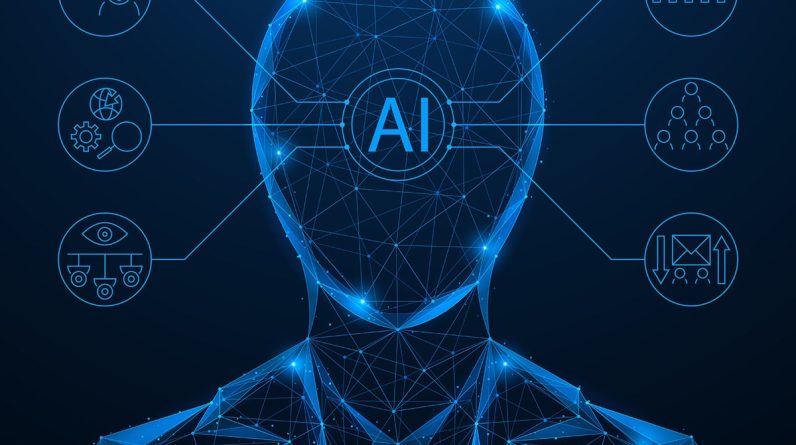
2
By Vikram Gupta, GVP Banking Development, Oracle Financial Services
Despite the continued excitement surrounding advancements such as generative AI (GenAI), artificial intelligence (AI) in banking is transitioning from a peak of hype to a more practical phase. While AI can offer banks a powerful toolkit for boosting the customer experience and staff productivity, it’s not a panacea. With a vast array of AI solutions available, identifying the right AI fit in a bank through careful planning and focusing on areas in which AI excels is part of unlocking its full business potential.
AI adoption in banking: triggers and challenges
Driven by its ability to automate tasks, personalize user experiences and manage risks, AI adoption is accelerating in banking and impacting how institutions operate and serve customers. AI can enhance decision-making, resulting in new insights and predictions; automate operations, improving speed and accuracy; and produce intelligent engagements with users, boosting customer experiences.
Despite these possibilities, many corporate and retail banks may not be prepared to implement AI at scale across their businesses. This begs the question: Why would banks hesitate to adopt AI?
Identify the right fit for AI in banking
Banks are typically large institutions with complex technologies and systems. This can slow the adoption of innovative technologies, such as AI. A rapidly evolving AI landscape and a plethora of capabilities can further complicate adoption. The lack of integration of AI capabilities into business workflows can often hinder usage and decrease buy-in from users.
Without a sharp vision of how AI can be implemented to improve business functionalities, banks may struggle to justify long-term investments and achieve meaningful change. A strategic, holistic approach is needed to identify in what specific areas AI can add value.
Evaluate the need
Banks can first analyze challenges in core operations and customer journeys to pinpoint in which areas AI can offer the most significant value additions. For example, are customers facing inordinate delays in loan processing due to process inefficiencies? Is it difficult to scale personalized customer interactions? New insights and predictions can speed up loan-processing decision-making or offer personalized recommendations to customers. Intelligent automation can simplify and streamline origination workflows, thereby improving speed and accuracy.
Focus on quantifiable outcomes
Tying in identified needs with quantifiable goals such as higher cost savings, faster turnaround times or better customer satisfaction can justify investments in AI and enable banks to prioritize AI initiatives, resulting in higher potential impacts. Several core business and customer-service functions are ripe to be augmented or optimized with artificial intelligence and automation for the strongest impacts in mission-critical areas.
Choose the optimum technology
All technologies are not equally beneficial to all users, and the dynamic and disruptive nature of technological advancements may further complicate matters. AI technologies can deliver a wide range of benefits. Machine learning (ML) excels at pattern recognition by analyzing large datasets, making it ideal for predictive analytics. Natural language processing (NLP) enables machines to understand, interpret and generate human language, making it perfect for tasks involving communication and language processing, such as interpreting languages. GenAI, on the other hand, is designed to generate new data and content, such as text, images, and even music. Its capabilities to produce content make it well suited for rote tasks, such as summarizing analyses of vast amounts of information. The trick is to choose the technology that can address relevant needs and deliver tangible results in a well-defined timeframe.
Embed AI within the system
Banks are characterized by complex systems that manage massive volumes of data. Navigating within this ecosystem can be complex; even a sound AI strategy can be frustrated by the lack of strong data governance. AI embedded directly into daily workflows can solve this problem by bringing AI to the data, not the other way around, empowering users and simplifying maintenance and oversight capabilities.
Potential use cases for AI in banking
The banking industry has already experienced multiple instances when financial institutions found the right fit for AI adoption and successfully leveraged the technology to generate tangible value.
- Intelligent cash-flow predictions: Machine learning can forecast cash flows for corporate customers, requiring less manual, time-intensive crunching of financial data. The models factor in past cash-flow patterns and payer behaviors and they are capable of identifying complex relationships and hidden patterns that traditional methods might miss. This initial step allows financial professionals to focus on overseeing the process, validating the results, and concentrating on the issues. Together, this allows banks to achieve quantifiable benefits as they optimize their working-capital management.
- Streamlined customer onboarding: AI can analyze documents such as IDs (identity documents), passports, and utility bills to automatically extract relevant information, such as names, addresses, and dates of birth. The extracted data can then be populated into certain designated fields in an application, reducing manual efforts and speeding up onboarding while driving efficiencies and cost savings for a bank.
- Collector’s call summarization and note capture: GenAI can improve collection agents’ operational efficiency by transcribing call recordings and converting speech to text. GenAI can also analyze agents’ existing notes to identify key points and highlight keywords related to issues, resolutions, and customers’ sentiments. Based on these analyses, GenAI can also generate concise call summaries, helping banks lower Average Handle Time (AHT) significantly and improve agents’ efficiency by allowing them to engage with more customers.
- Smart supply-chain program automation: GenAI can also process text within sales contracts, identifying key details such as product names, quantities, delivery timelines, and pricing terms. This information can then be used to manage the supply chain and key vendor relationships.
In conclusion
AI is an ongoing journey. The successful deployment of AI in banking includes finding the right fit for AI capabilities within the business through a strategic approach that aligns with the institution’s goals while addressing key considerations. Finding the perfect AI solution is a trial-and-error process. Be prepared for some missteps, but embrace the “fail fast, fail small” mentality. Nimble iterations and adjustments can lead banks to the right fit much faster, aligning with business goals and transformation journeys to stay on track. The potential for cost savings, improved customer experiences, and increased operational efficiencies make it a worthwhile pursuit. By carefully evaluating use cases, addressing concerns, and considering the costs and environmental impacts, banks can unlock the full business potential of artificial intelligence.
ABOUT THE AUTHOR
Vikram Gupta is the Group Vice President of Banking Strategy & Development at Oracle Financial Services, where he is responsible for product strategy, marketing and development for the entire suite of Oracle’s banking offerings. He brings more than 39 years of experience in financial services and technology to his role at Oracle.








